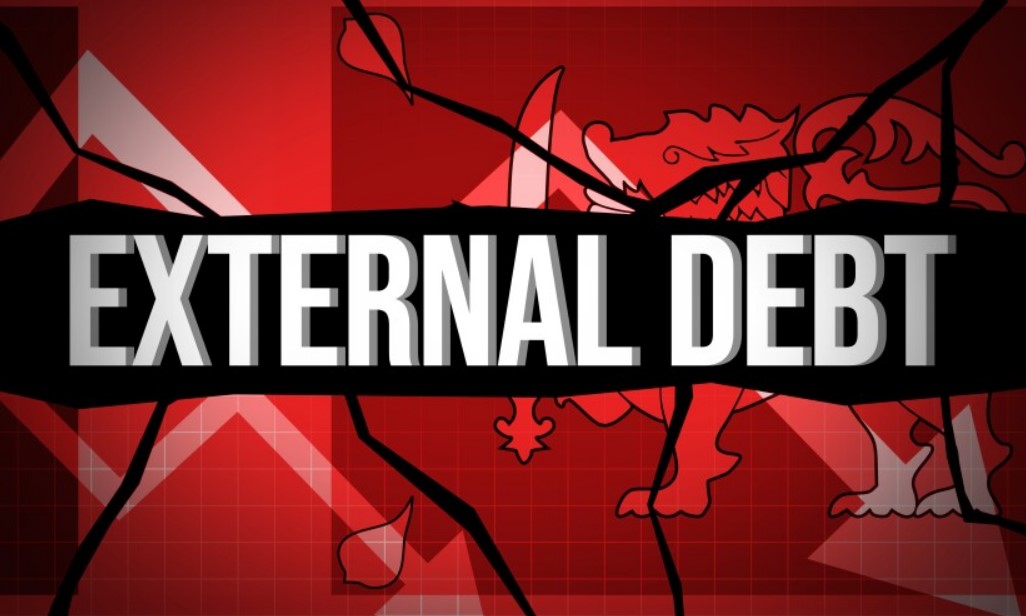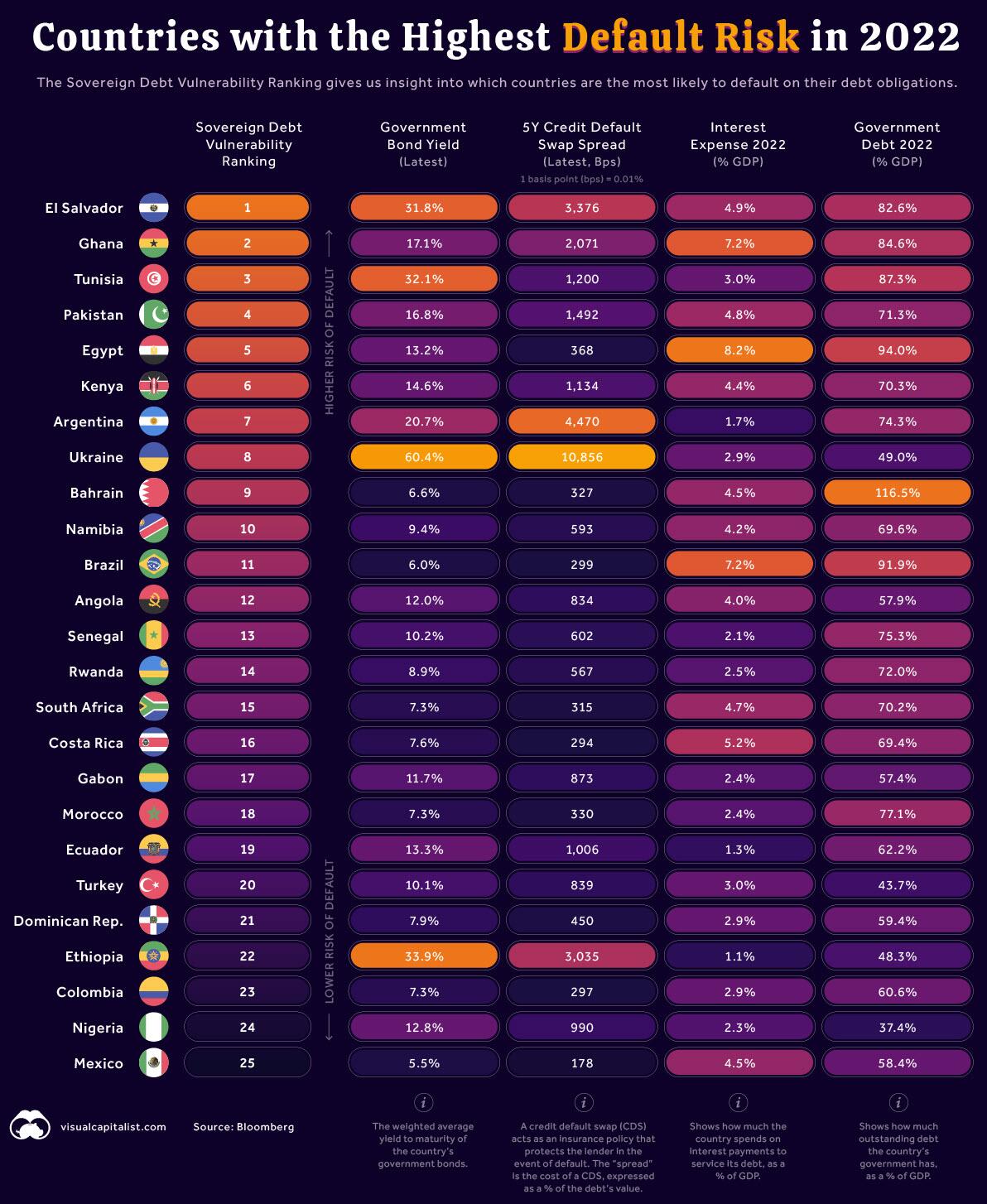 By Tyler Durden
By Tyler Durden
In May 2022, the South Asian nation of Sri Lanka defaulted on its debt for the first time. The country’s government was given a 30-day grace period to cover $78 million in unpaid interest, but ultimately failed to pay.
Not only does this impact Sri Lanka’s economic future, but as Visual Capitalist’s Marcus Lu notes, it also raises an important question: which other countries are at risk of default?
To find out, we’ve used data from Bloomberg to rank the countries with the highest default risk.
The Sovereign Debt Vulnerability Ranking
Bloomberg’s Sovereign Debt Vulnerability Ranking is a composite measure of a country’s default risk. It’s based on four underlying metrics:
- Government bond yields (the weighted-average yield of the country’s dollar bonds)
- 5-year credit default swap (CDS) spread
- Interest expense as a percentage of GDP
- Government debt as a percentage of GDP
To better understand this ranking, let’s focus on Ukraine and El Salvador as examples.
1 basis point (bps) = 0.01%
Why are Ukraine’s Bond Yields so High?
Ukraine has high default risk due to its ongoing conflict with Russia. To understand why, consider a scenario where Russia was to assume control of the country. If this happened, it’s possible that Ukraine’s existing debt obligations will never be repaid.
That scenario has prompted a sell-off of Ukrainian government bonds, pushing their value down to nearly 30 cents on the dollar. This means that a bond with face value of $100 could be purchased for $30.
Easiest way to get your first bitcoin (Ad)
Because yields move in the opposite direction of price, the average yield on these bonds has climbed to a very high 60.4%. As a point of comparison, the yield on a U.S. 10-year government bond is currently 2.9%.
What is a CDS Spread?
Credit default swaps (CDS) are a type of derivative (financial contract) that provides a lender with insurance in the event of a default. The seller of the CDS represents a third party between the lender (investors) and borrower (in this case, governments).
In exchange for receiving coverage, the buyer of a CDS pays a fee known as the spread, which is expressed in basis points (bps). If a CDS has a spread of 300 bps (3%), this means that to insure $100 in debt, the investor must pay $3 per year.
Applying this to Ukraine’s 5-year CDS spread of 10,856 bps (108.56%), an investor would need to pay $108.56 each year to insure $100 in debt (though it is in practice an upfront payment and then constant stream of payments which implies default is likely in the very short term). This suggests that the market has very little faith in Ukraine’s ability to avoid default.
Why is El Salvador Ranked Higher?
Despite having lower values in the two metrics discussed above, El Salvador ranks higher than Ukraine because of its larger interest expense and total government debt.
According to the data above, El Salvador has annual interest payments equal to 4.9% of its GDP, which is relatively high. Comparing to the U.S. once more, America’s federal interest costs amounted to 1.6% of GDP in 2020.
When totaled, El Salvador’s outstanding debts are equal to 82.6% of GDP. This is considered high by historical standards, but today it’s actually quite normal.
The next date to watch will be January 2023, as this is when the country’s $800 million sovereign bond reaches maturity. Recent research suggests that if El Salvador were to default, it would experience significant, yet temporary, negative effects.
Another Hot Topic for El Salvador: Bitcoin
In September 2021, El Salvador became the first country in the world to adopt bitcoin as legal tender. This means that Bitcoin is recognized by law as a means to settle debts and other obligations.
The International Monetary Fund (IMF) criticized this decision in early 2022, urging the country to revoke legal tender status. In hindsight, these warnings were wise, as Bitcoin’s value has fallen by 56% year-to-date.
While this isn’t directly related to El Salvador’s default risk, it does open potential avenues for relief. For instance, large players in the crypto space may be willing to assist the government to keep the concept of “nation-state bitcoin adoption” alive.
Source: ZeroHedge
Top image: Global Capital Asia
Become a Patron!
Or support us at SubscribeStar
Donate cryptocurrency HERE
Subscribe to Activist Post for truth, peace, and freedom news. Follow us on SoMee, Telegram, HIVE, Flote, Minds, MeWe, Twitter, Gab, What Really Happened and GETTR.
Provide, Protect and Profit from what’s coming! Get a free issue of Counter Markets today.



Be the first to comment on "These Are The Countries With The Highest Default Risk"